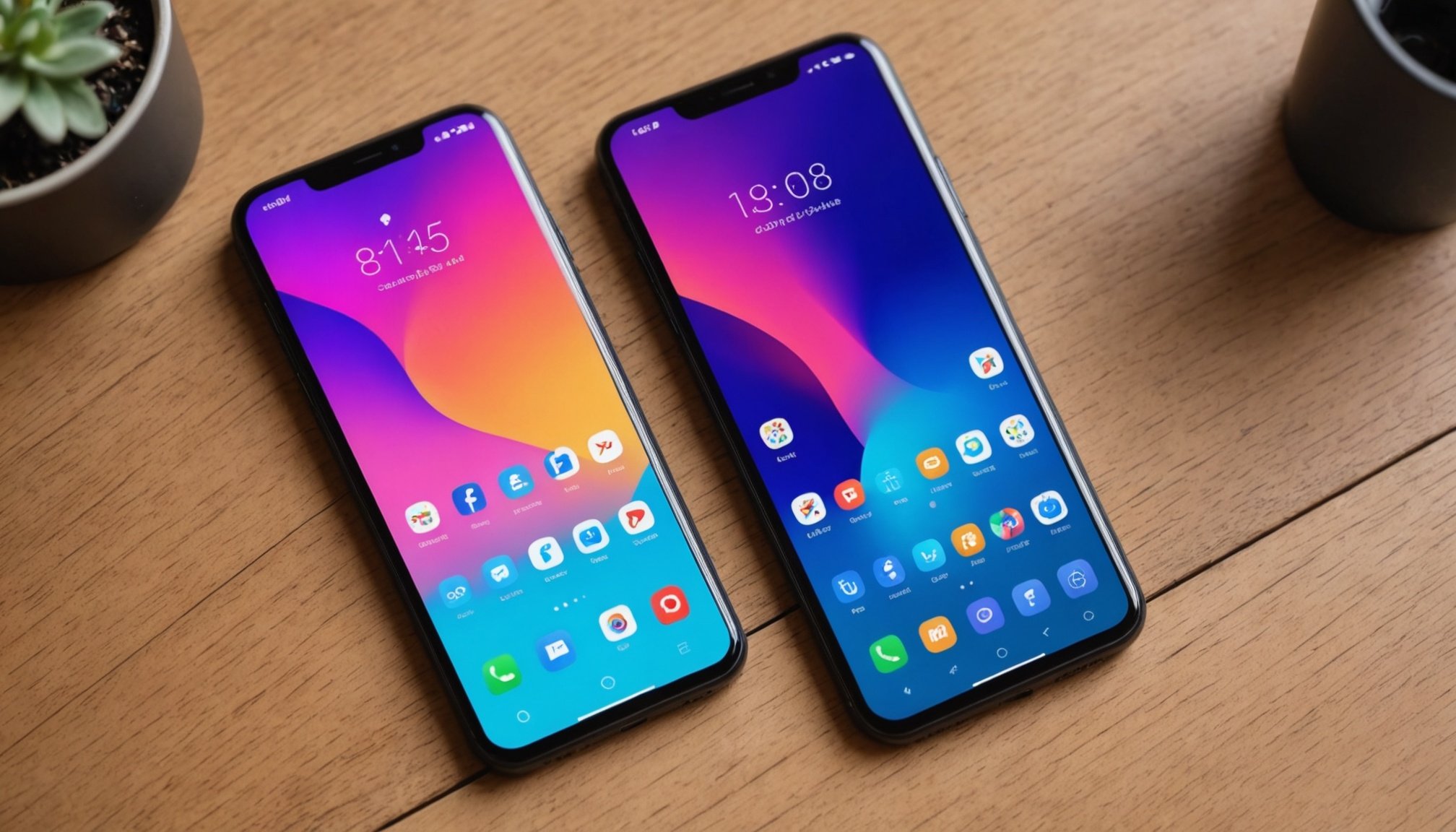Current Smartphone Design Trends
In today’s fast-paced world of smartphone design trends, aesthetics have become a major driving factor. Sleek lines, thin bezels, and vibrant displays dominate the frontlines of modern smartphone aesthetics. These design elements not only enhance the visual appeal but also play a vital role in user experience. Among the noteworthy technical features influencing these design choices are advanced camera modules, in-display fingerprint sensors, and foldable screens.
Examples of popular smartphone models highlighting these trends include the Samsung Galaxy Z Flip, with its innovative folding design, and the iPhone 15, boasting a minimalist aesthetic with a focus on advanced photographic capabilities. These models demonstrate how innovation in technical features can redefine traditional design paradigms, offering users an entirely new perspective on what their smartphones can do.
In parallel : Exploring how ios and android ecosystems influence consumer decisions
The balance between incorporating cutting-edge technology and maintaining aesthetic appeal is a delicate one that manufacturers continually strive to perfect. As these trends evolve, they reflect not only advancements in technology but also shifting consumer preferences and expectations, further driving the innovation in the industry.
Visual Examples of Innovative Smartphones
Smartphone design has continually pushed boundaries, with innovative smartphone designs often setting new benchmarks in visual appeal and technology. These designs captivate users by integrating cutting-edge features and aesthetics, resulting in a captivating user experience.
Also to see : Unlocking advantages: why dual sim smartphones are essential for frequent travelers
Modern Flagship Designs
Leading the market are flagship models like the Samsung Galaxy S23 Ultra and the Apple iPhone 15 Pro, renowned for their blend of sophisticated design and advanced technology. These phones typically exhibit sleek silhouettes and minimal bezels, showcasing impressive displays that enhance both functionality and aesthetic pleasure.
Concept Phones and Prototypes
Upcoming innovations are often previewed through concept phones and prototypes, such as the Xiaomi Mi Mix Alpha. This device, with its 360-degree surround display, exemplifies the potential for future smartphone designs, challenging traditional design constraints and providing a glimpse into what might soon become the norm.
Unique Features in Design
Recent models have introduced unique features, such as rotating cameras and under-display selfie cameras, which add to a phone’s feature highlights without compromising its appeal. These innovative elements are carefully crafted to ensure that while functionality is at the forefront, the visual appeal remains a priority, keeping users intrigued and engaged.
Expert Opinions on Smartphone Design
In the rapidly evolving world of smartphone design, expert insights provide critical perspectives on industry trends. Renowned designers and tech professionals offer valuable design analysis, critiquing existing market offerings and predicting future innovations.
Industry leaders often emphasise the delicate balance between aesthetics and functionality. Many believe that as innovation drives new technologies, such as foldable screens and advanced camera systems, maintaining an appealing design without sacrificing usability is crucial. These experts foresee trends shifting towards more sustainable materials and designs, responding to growing consumer demand for eco-friendly products.
Furthermore, industry opinions suggest that minimalist designs will continue to dominate. This is partly due to the sleekness and simplicity that many users find attractive, and also because of the efficient integration of complex technologies.
Predictions from design analysts indicate that future design trends will embrace more adaptive interfaces, responding to user behaviour and interactions. Such advancements will likely necessitate new approaches in user experience and interface design, appealing to tech-savvy consumers who prioritise cutting-edge capabilities without compromising on visual appeal.
Comparisons of Different Smartphone Models
In the realm of model comparisons, understanding the diversity in design philosophy among popular smartphone brands is key. Companies like Apple and Samsung exemplify distinct approaches, balancing aesthetics with functionality in their unique ways. Apple’s design philosophy centres on minimalist elegance, emphasising clean lines and user-friendly interfaces, while Samsung often drives innovation with bold, futuristic designs and vibrant displays.
When evaluating performance vs. aesthetics, it’s evident that flagship models strive to excel in both domains. Features like high-resolution cameras and sophisticated software enhancements contribute to superior performance, influencing designers to craft visually appealing devices that still cater to demanding user needs.
For users, design evaluation extends beyond aesthetics, encompassing hands-on experience and interaction. Feedback often highlights how ergonomic design and intuitive interfaces improve usability. Many consumers prefer smartphones that offer both visual appeal and practical ease of use, creating synergy between how a phone looks and functions. This balance is crucial, as it directly impacts overall user experience insights. By blending design with functionality, smartphone manufacturers aim to craft devices that seamlessly integrate into users’ daily lives.
Future Projections in Smartphone Design
As the industry anticipates future design trends, emerging technologies promise to reshape the landscape of smartphone aesthetics. Analysts predict that foldable screens and augmented reality capabilities will become standard, significantly influencing how devices are designed. Such technological advancements highlight the growing importance of adaptive and flexible structures in smartphones, possibly leading to even more personalised user experiences.
Consumer preferences are expected to evolve, with increased demand for sustainable materials in smartphone manufacturing. As environmental awareness grows, both consumers and manufacturers may prioritise eco-friendly options without sacrificing aesthetic appeal. This shift could lead to a broader selection of materials that maintain the sleek and sophisticated look that users expect.
Market predictions suggest that innovation will not only focus on aesthetics but also functionality, with smartphones incorporating adaptive interfaces that respond to individual user behaviours. As these developments unfold, they are likely to redefine standard expectations, urging brands to continuously reinvent their offerings. The ongoing challenge will be in balancing innovative designs with practical usability, ensuring that the visual appeal of a smartphone is matched by its technological prowess and usefulness.






